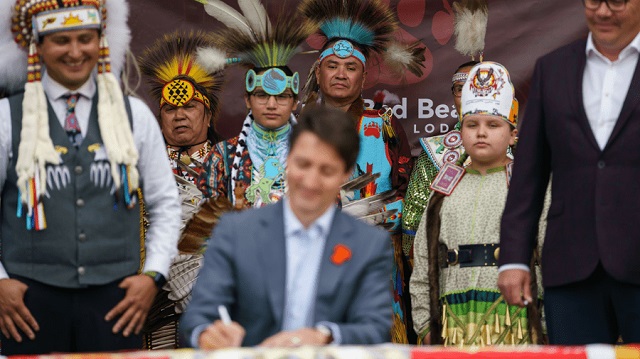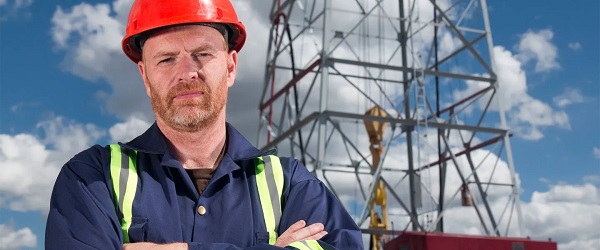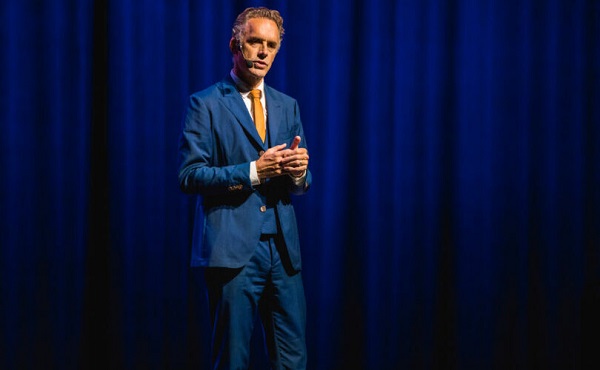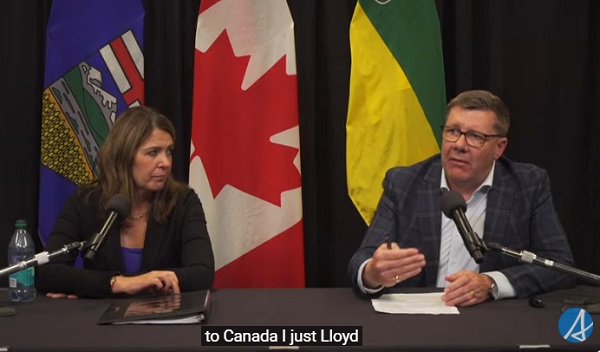Business
Trump 2.0 means Canada must put income tax cuts on the table

From the Canadian Taxpayers Federation
By Jay Goldberg
The topic on everyone’s mind is tariffs: Will Trump act on his threat to impose 25 per cent across-the-board tariffs on the Canadian economy?
But there’s something else Canadians should worry about: income taxes.
During President-Elect Donald Trump’s first term, he lowered income taxes for Americans at virtually at all income levels. And Trump pledged during the presidential election campaign to cut taxes further.
Here in Canada, our tax rates are already uncompetitive. With a possible tax cut south of the border, it’s time to re-examine Canada’s income tax policies.
Let’s take a gander at how Canadians who earn $75,000 a year are taxed compared to Americans.
A taxpayer in Ontario earning $75,000 a year pays an income tax rate of about 30 per cent.
Compare that to the two states bordering Ontario: Michigan and New York. In Michigan, a taxpayer earning $75,000 a year pays a 26.3 per cent income tax rate. And in New York, one of the highest-taxed states in the U.S., that taxpayer would face a 27.5 per cent income tax bill.
Considering that sales taxes and hydro rates are lower south of the border, Canada is clearly at a disadvantage. Add to that the fact that Canadians pay a punishing carbon tax while Americans don’t.
The situation is even more stark for those with higher incomes.
A taxpayer earning $150,000 in Ontario sends roughly 41.7 per cent of their income to Queen’s Park and Ottawa in income taxes.
Compare that once again to Michigan and New York. A Michigander making $150,000 a year pays a 28.3 per cent income tax rate. And a New Yorker pays 30 per cent.
These numbers are glaring. Canadians pay dramatically higher income taxes than our neighbours to the south. And Michigan and New York are some of the higher-tax states.
In Texas, a taxpayer earning $150,000 pays a 24 per cent income tax rate. That’s lower than the income tax rate for an Ontarian who earns half that much.
The cross-border tax gap will likely grow further in the new year. Trump says he plans to further lower income taxes while the Trudeau and Ford governments show little appetite for providing taxpayers up north with a similar break.
For the sake of Canada’s economic competitiveness, income tax cuts need to be placed firmly back on the public policy agenda.
Premier Doug Ford promised to cut income taxes for middle-class Ontarians by nearly $800 a year when he was first became premier six years ago. He pledged to do so by lowering Ontario’s second income tax bracket by 20 per cent.
If there was ever a time for Ford to follow through on his election promise, that time is now.
The feds need to look at cutting income taxes too. Most of the income tax burden in Canada is caused by high tax rates at the federal level.
To insulate Canada from the magnetic pull that will be triggered by a second round of Trump tax cuts, Prime Minister Justin Trudeau must look at lowering personal income tax rates.
Trudeau can cut income taxes substantially without hiking the deficit because there’s plenty of opportunities for savings.
Here’s where to start: The Trudeau government spent $47 billion on corporate welfare in 2021.
If Trudeau eliminated corporate welfare, the feds could cut personal income taxes by 20 per cent across the board without hiking the deficit.
Canada’s politicians can’t be complacent. We can’t control what Trump chooses to do when he gets back into the White House, but Canada’s politicians can control public policy north of the border to make the Canadian economy more competitive.
That starts with cutting income taxes.
Business
Ottawa has spent nearly $18 billion settling Indigenous ‘specific claims’ since 2015

From the Fraser Institute
By Tom Flanagan
Since 2015, the federal government has paid nearly $18 billion settling an increasing number of ‘specific claims’ by First Nations, including more than $7 billion last year alone, finds a new study released today by the Fraser Institute, an independent, non-partisan Canadian public policy think tank.
“Specific claims are for past treaty breaches, and as such, their number should be finite. But instead of declining over time, the number of claims keeps growing as lucrative settlements are reached, which in turn prompts even more claims,” said Tom Flanagan, Fraser Institute senior fellow, professor emeritus of political science at the University of Calgary and author of Specific Claims—an Out-of-Control Program.
The study reveals details about “specific claims,” which began in 1974 and are filed by First Nations who claim that Canadian governments—past or present—violated the Indian Act or historic treaty agreements, such as when governments purchased reserve land for railway lines or hydro projects. Most “specific claims” date back 100 years or more. Specific claims are contrasted with comprehensive claims, which arise from the absence of a treaty.
Crucially, the number of specific claims and the value of the settlement paid out have increased dramatically since 2015.
In 2015/16, 11 ‘specific claims’ were filed with the federal government, and the total value of the settlements was $27 million (in 2024 dollars, to adjust for inflation). The number of claims increased virtually every year since so that by 2024/25, 69 ‘specific claims’ were filed, and the value of the settlements in 2024/25 was $7.061 billion. All told, from 2015/16 to 2024/25, the value of all ‘specific claims’ settlements was $17.9 billion (inflation adjusted).
“First Nations have had 50 years to study their history, looking for violations of treaty and legislation. That is more than enough time for the discovery of legitimate grievances,” Flanagan said.
“Ottawa should set a deadline for filing specific claims so that the government and First Nations leaders can focus instead on programs that would do more to improve the living standards and prosperity for both current and future Indigenous peoples.”

Specific Claims: An Out-of-Control Program
- Specific claims are based on the government’s alleged failure to abide by provisions of the Indian Act or a treaty.
- The federal government began to entertain such claims in 1974. The number and value of claims increased gradually until 2017, when both started to rise at an extraordinary rate.
- In fiscal year 2024/25, the government settled 69 claims for an astonishing total of $7.1 billion dollars.
- The evidence suggests at least two causes for this sudden acceleration. One was the new approach of Justin Trudeau’s Liberal government toward settling Indigenous claims, an approach adopted in 2015 and formalized by Minister of Justice Jodi Wilson-Raybould’s 2019 practice directive. Under the new policy, the Department of Justice was instructed to negotiate rather than litigate claims.
- Another factor was the recognition, beginning around 2017, of “cows and plows” claims based on the allegation that agricultural assistance promised in early treaties—seed grain, cattle, agricultural implements—never arrived or was of poor quality.
- The specific-claims process should be terminated. Fifty years is long enough to discover legitimate grievances.
- The government should announce a short but reasonable period, say three years, for new claims to be submitted. Claims that have already been submitted should be processed, but with more rigorous instructions to the Department of Justice for legal scrutiny.
- The government should also require more transparency about what happens to these settlements. At present, much of the revenue paid out disappears into First Nations’ “settlement trusts”, for which there is no public disclosure.
Business
Senator wants to torpedo Canada’s oil and gas industry

From the Fraser Institute
Recently, without much fanfare, Senator Rosa Galvez re-pitched a piece of legislation that died on the vine when former prime minister Justin Trudeau prorogued Parliament in January. Her “Climate-Aligned Finance Act” (CAFA), which would basically bring a form of BDS (Boycott, Divestment, and Sanctions) to Canada’s oil and gas sector, would much better be left in its current legislative oblivion.
CAFA would essentially treat Canada’s oil and gas sector like an enemy of the state—a state, in Senator Galvez’ view, where all values are subordinate to greenhouse gas emission control. Think I’m kidding? Per CAFA, alignment with national climate commitments means that everyone engaged in federal investment in “emission intensive activities [read, the entire oil and gas sector] must give precedence to that duty over all other duties and obligations of office, and, for that purpose, ensuring the entity is in alignment with climate commitments is deemed to be a superseding matter of public interest.”
In plain English, CAFA would require anyone involved in federal financing (or federally-regulated financing) of the oil and gas sector to divest their Canadian federal investments in the oil and gas sector. And the government would sanction those who argue against it.
There’s another disturbing component to CAFA—in short, it stacks investment decision-making boards. CAFA requires at least one board member of every federally-regulated financial institution to have “climate expertise.” How is “climate expertise” defined? CAFA says it includes people with experience in climate science, social science, Indgineuous “ways of knowing,” and people who have “acute lived experience related to the physical or economic damages of climate change.” (Stacking advisory boards like this, by the way, is a great way to build public distrust in governmental advisory boards, which, in our post-COVID world, is probably not all that high. Might want to rethink this, senator.)
Clearly, Senator Galvez’ CAFA is draconian public policy dressed up in drab finance-speak camouflage. But here’s what it would do. By making federal investment off-limits to oil and gas companies, it would quickly put negative pressure on investment from both national and international investors, effectively starving the sector for capital. After all, if a company’s activities are anathema to its own federal regulators or investment organs, and are statutorily prohibited from even verbally defending such investments, who in their right minds would want to invest?
And that is the BDS of CAFA. In so many words, it calls on the Canadian federal government to boycott, divest from, and sanction Canada’s oil and gas sector—which powers our country, produces a huge share of our exports, and employs people from coast to coast. Senator Galvez would like to see her Climate-Aligned Finance Act (CAFA) resurrected by the Carney government, whose energy policy to-date has been less than crystal clear. But for the sake of Canadians, it should stay dead.
-

 conflict2 days ago
conflict2 days agoTrump dismisses US intelligence that Iran wasn’t pursuing nuclear bomb before Israeli attack
-

 Censorship Industrial Complex2 days ago
Censorship Industrial Complex2 days agoJordan Peterson reveals DEI ‘expert’ serving as his ‘re-education coach’ for opposing LGBT agenda
-

 Business2 days ago
Business2 days agoCanada’s critical minerals are key to negotiating with Trump
-

 espionage23 hours ago
espionage23 hours agoFrom Sidewinder to P.E.I.: Are Canada’s Political Elites Benefiting from Beijing’s Real Estate Reach?
-

 Energy21 hours ago
Energy21 hours agoWho put the energy illiterate in charge?
-

 International2 days ago
International2 days agoTrump puts new price tag on Canada joining “Golden Dome”
-

 espionage20 hours ago
espionage20 hours agoFBI Buried ‘Warning’ Intel on CCP Plot to Elect Biden Using TikTok, Fake IDs, CCP Sympathizers and PRC Students—Grassley Probes Withdrawal
-

 Alberta2 days ago
Alberta2 days agoUnified message for Ottawa: Premier Danielle Smith and Premier Scott Moe call for change to federal policies








